Henry’s Single-Shot Rifle
Slim, Trim and Ready for action!
other By: Stan Trzoniec | January, 26
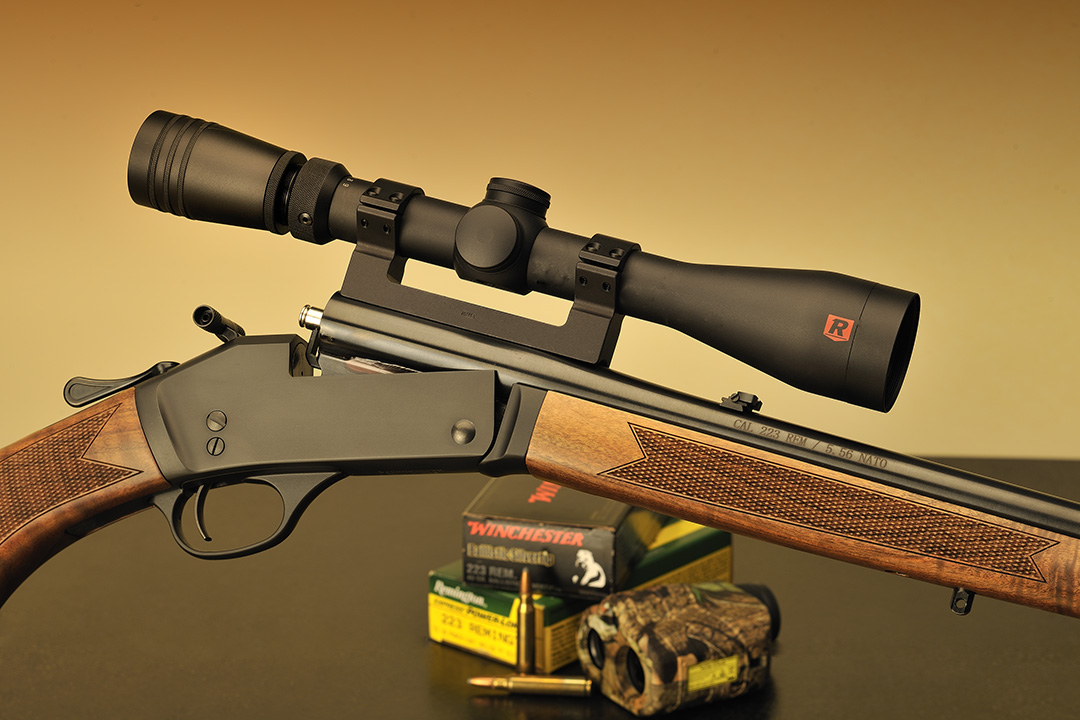
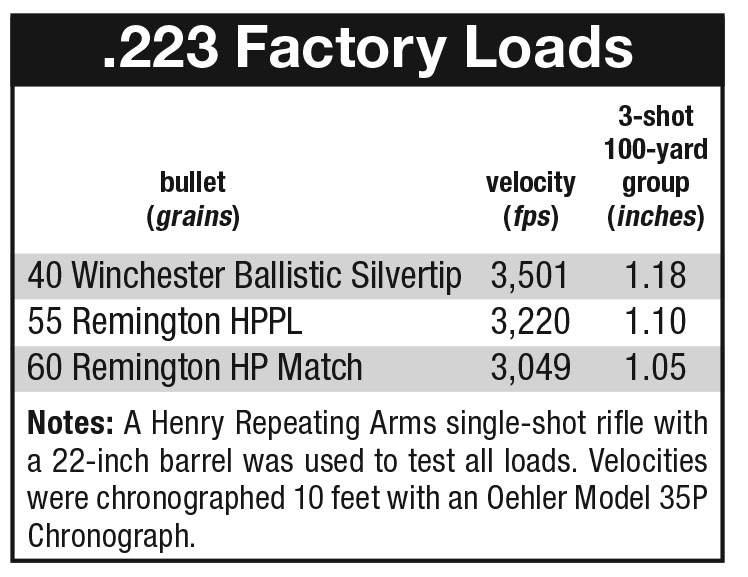
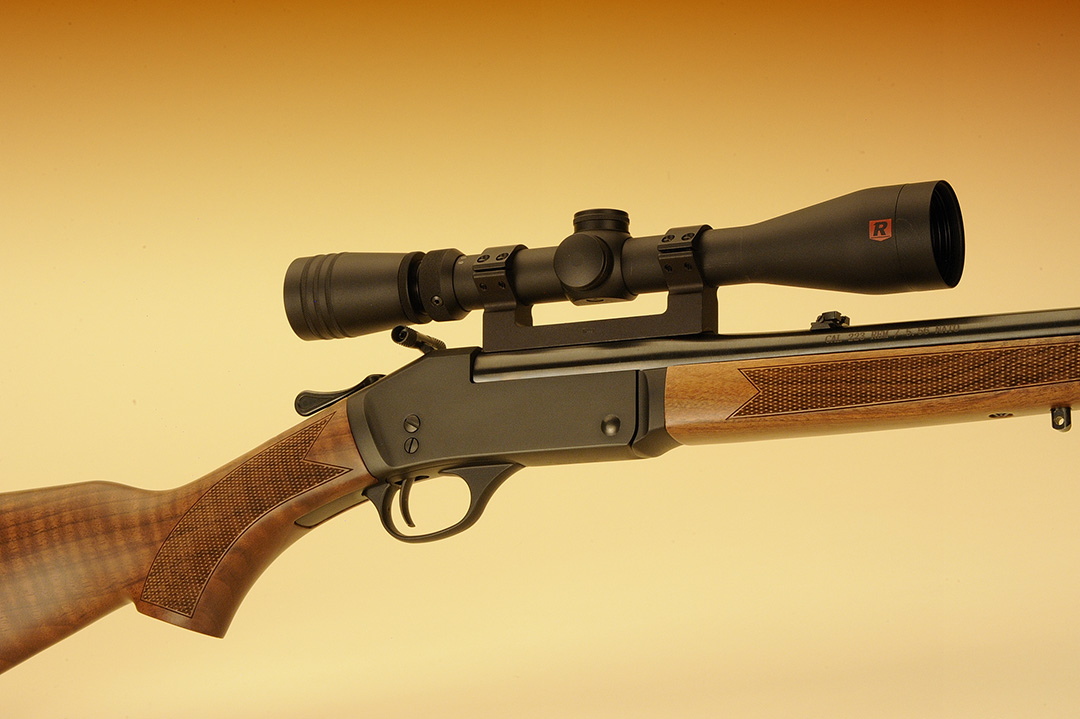
The idea of having a compact rifle that can be up to four inches shorter than a traditional bolt action with the same barrel length, appeals to many, especially those hunters needing a rifle they can easily shoot left-handed and moving around in thick cover with the gun on their shoulder. On the other hand, there are single-shot bolt-action rifles, which circumvent this type of design, but those are somewhat few and far between with the majority of those aimed at the varmint hunter.
One single-shot rifle that has come to my attention are the fine rifles made by Henry Repeating Arms of Rice Lake, Wisconsin. These guns are break open in design, come in a wide range of cartridges all with a price point to satisfy the majority of sportsmen today. Additionally, Henry offers a choice of three models including a youth gun that is different in the coloration of the receivers and with a long list of guns in both centerfire rifle and shotgun chamberings, there isn’t much they forgot. In reality, Henry hit the sweet spot in single-shot rifles; a gun that is not overpriced, yet has all the bells and whistles both the novice and veteran hunter can appreciate in fine looks and functioning. Now, add in a fine fit and finish to the product and bingo, we have a winner here.
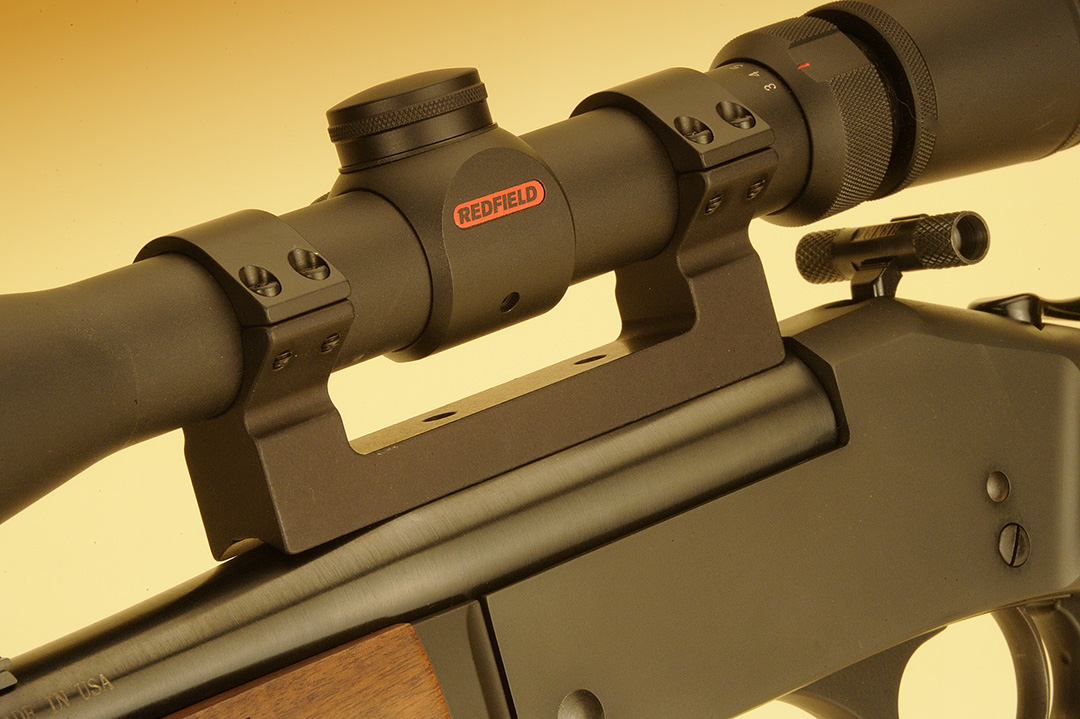
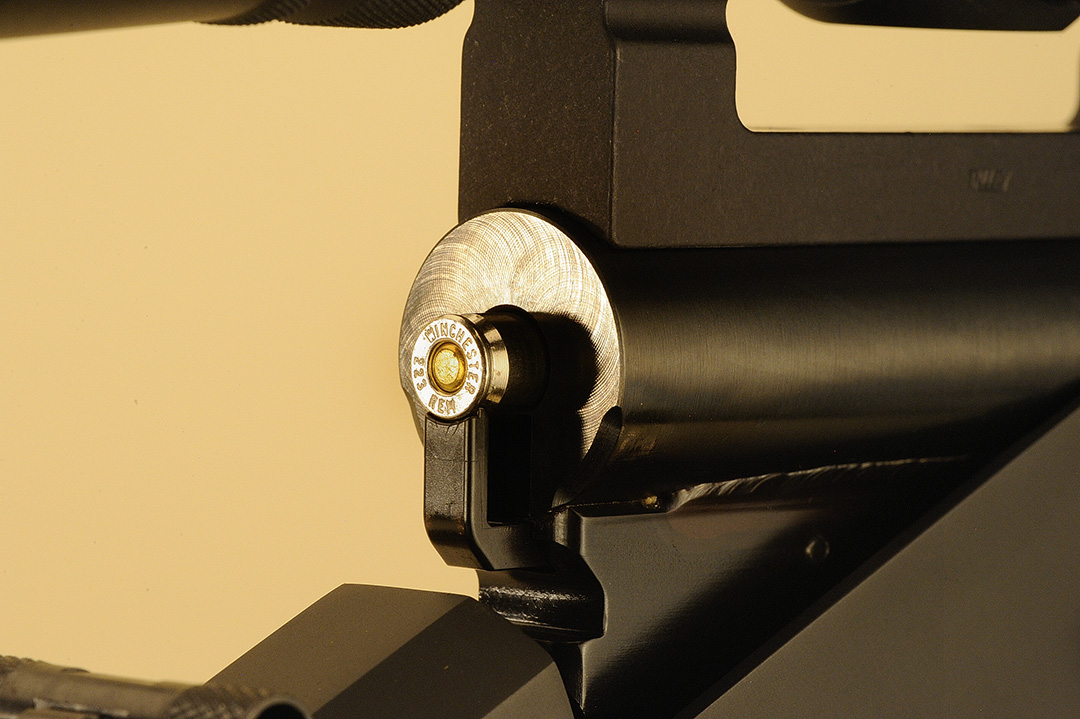
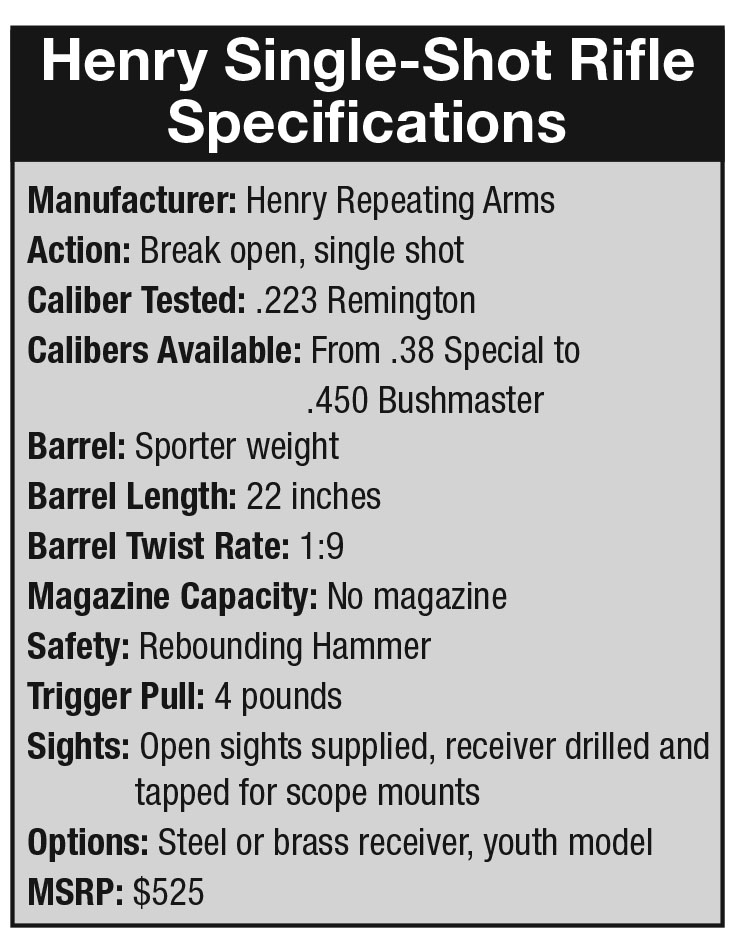
For the shooter, the forearm is tapered from the muzzle end to the receiver from about 1¼ to 2½ inches and squared off. I would like to see Henry offer a wider beavertail forearm for varmint hunters using the .22 calibers as a rest in the field and before you even look through the website, I’ll save you the trouble….nothing in the accessories page for this item. The buttstock is full and has a slightly longer length of pull than I like at an even 14 inches. The pistol grip has no cap but is filled out on both sides with a slight swell, perfect for both right- and left-hand shooters. The only thing that I could find with this rifle is that originally, I believe it was made to use open sights that are supplied with each gun – a dovetail rear adjustable via a drift and front sight with a gold bead. On the downside, the drop at the comb is a bit low, so much in fact that when using the gun with a scope, only the bottom part of my jaw contacts the stock. Regrettably, there is no way to use another ring set as anything lower hampers the operation of the hammer. Again, as another suggestion: a stock with a higher straighter comb or combined with a cheekpiece would certainly solve the problem other than an unsightly or aftermarket moleskin addition to the stock.
The checkering was applied to the forearm in a point pattern to my count of 18 lines per inch (LPI) in a perfect pattern without any crushed points or missteps at the borderline. This holds true for the pistol grip, although because of the area, there is more coverage. The gun is supplied with front and back sling swivels and a cushion-type of recoil pad in a classic design complete with a black spacer.
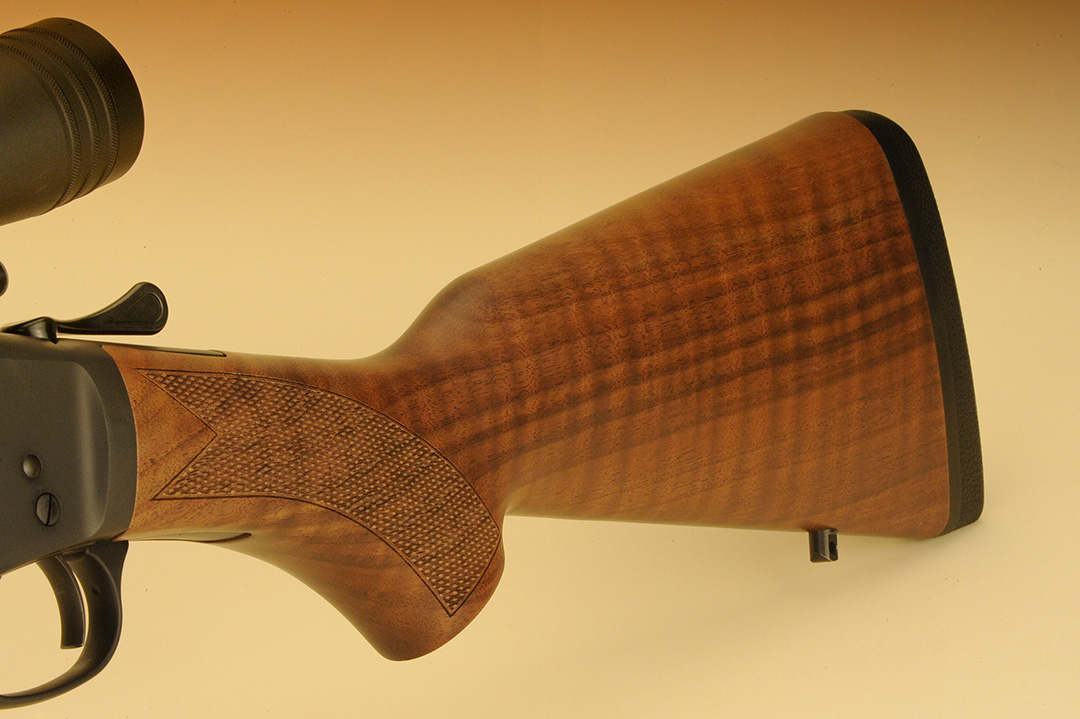
I keep mentioning the little things that matter to a left-hand shooter and in addition to the versatile and ambidextrous stock, and concerning the action, the operating lever moves to the right and left to open the action and load the gun. Opening the gun proved to be very smooth as the barrel drops down under its own weight. Matching of the barrel and forearm to the receiver was straight to the point with the overall fitting of both completed with minimum tolerances making the gun a pleasure to look at and use. To disassemble the gun for cleaning, check for ammunition in the chamber, then remove the barrel pin with a brass or wood punch. Reassemble making sure the ejector/extractor pin follow through the slots on either part of the receiver for proper functioning.
When it came to the extractor, I had mixed reactions at the range. Some liked the idea of the extractor for saving brass, others would like to have had an ejector for spent cases. It does not matter to me as with a single shot, for the most part out varmint hunting, I have time to retrieve the case as it rises from the breech. Opening the gun shows this rifle is made for many generations, at least in the .223 Remington, as the rear of the barrel measures a hefty 1.105 inches with an overall length of 22 inches.
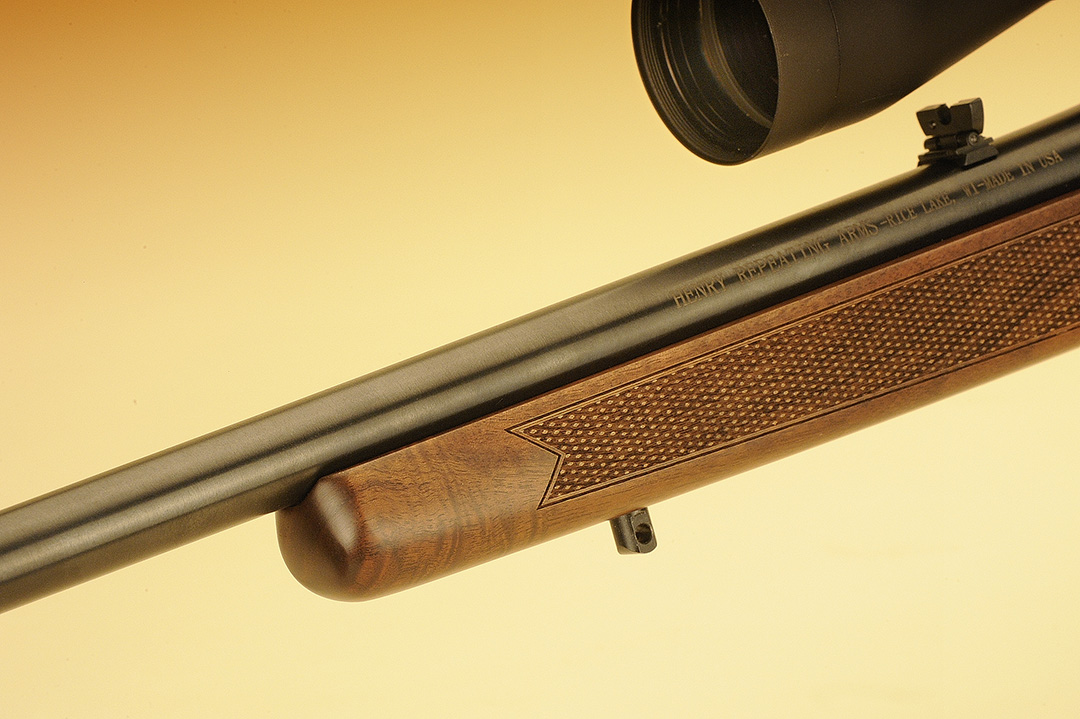
With the help of the Henry staff, I received one of their Talley one-piece mounts (or Weaver #82) with 1-inch rings to hold a Redfield 3-9x 40mm scope. Again, since the mount and scope are low, I needed a hammer extension and Henry came to the rescue with a Grovtec ambidextrous unit that helped greatly with cocking the weapon under the eyepiece of the scope. The trigger pull came to a touch over 4 pounds, but the let-off was so crisp it felt lighter. For a safety, Henry went to the more traditional type of rebounding hammer design where the hammer does not touch the firing pin unless the trigger is pulled.
When it came to detailing the final finish of the gun, everything was polished smooth and satin blued on my gun. Inletting was tight around the receiver, the rear receiver tang, trigger guard and the barrel channel. As an option in the line, there is a model with limited chamberings (.357 Magnum, .44 Magnum, .45-70) with a brass receiver and for the young hunters starting out, a youth rifle is available in the .243 Winchester only. Looking at the receiver, one can easily get the idea of some engraving to spruce up the gun. By my basic measurements, I come up with about 9.860 square inches per side, which compares favorably to the Browning BAR in its early form.
As a small game/varmint cartridge, it’s hard to beat the .223 Remington. With the history of its military involvement and later in the sporting field, hardly a day goes by that I don’t get see some mention of it in my research. At the range on a summer’s day, the Henry performed with one minute of angle groups with factory ammunition and with one load, from the Remington 55-grain offering, I had two shots touching. No doubt, handloads and a longer break-in period would shrink those groups down to more varmint-type groups and with all the components available in the .22 caliber; it’s not hard to do.
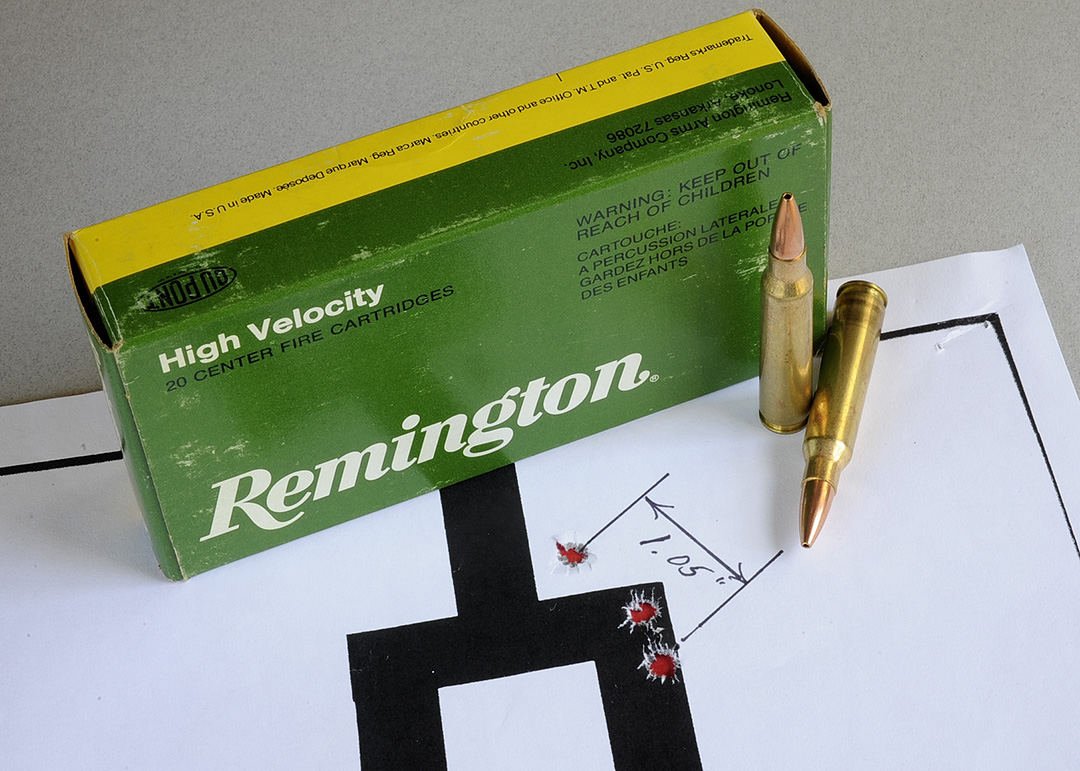
At the bench, the Henry was a convenient gun to use for testing. Once all settled in, I fired a shot, then by just using the operating lever to open the gun, pushing it forward against the front rest opened the gun to pick out the spent shell and insert another. The crisp trigger made shooting a pleasure and again, the only complaint I have on the gun is the low profile at the comb. This made centering the reticle of the scope a little more difficult than usual, but overcoming this was not a big problem.
As a finale, looking at this Henry rifle, it’s a top-quality rig, light in weight, simple in design, all assembled with a few components housed in a sleek profile. If you like challenge of a single-shot rifle and hunt, by all means check this rifle out.

